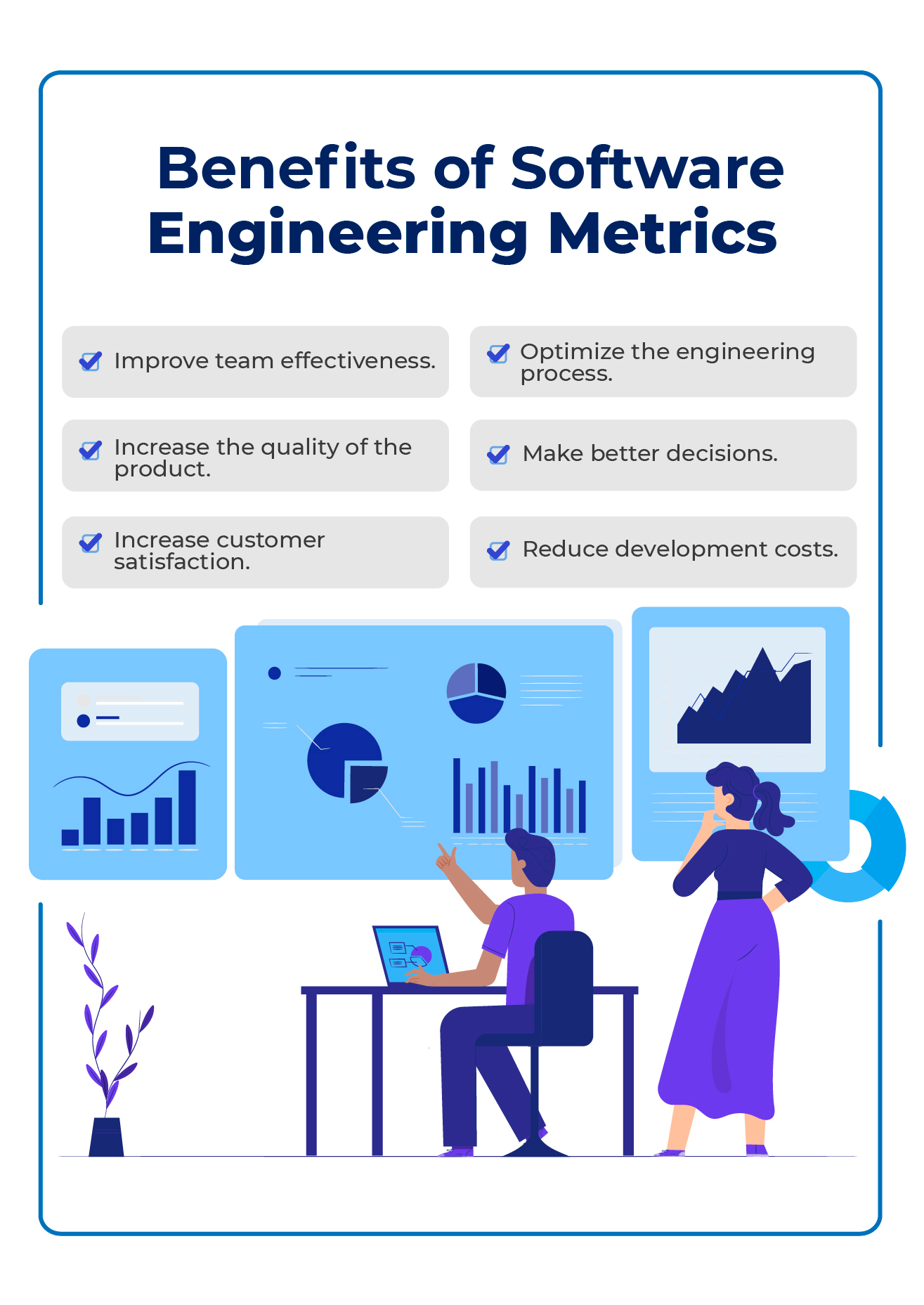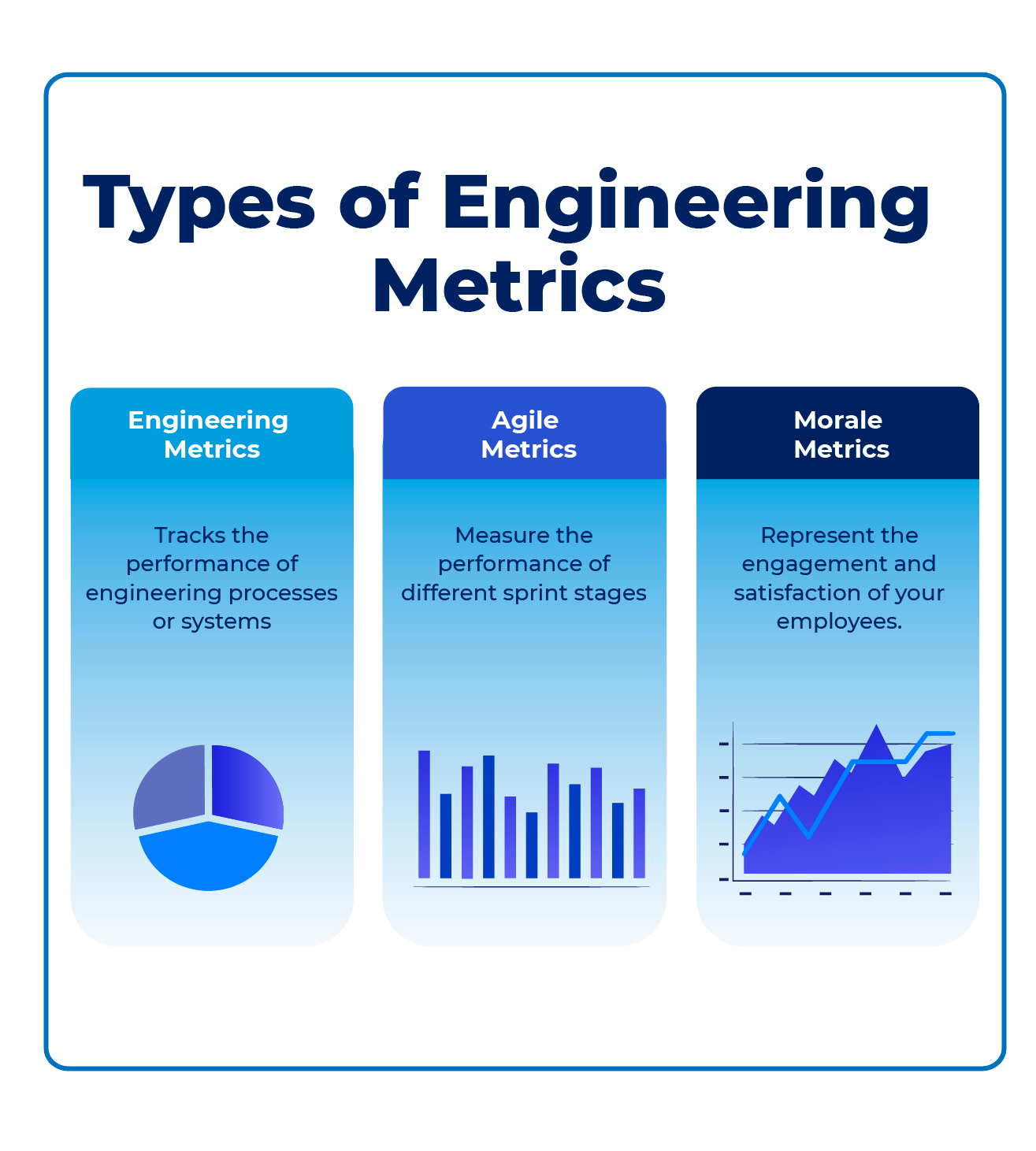Engineering Metrics To Improve Your Project
With the help of metrics, engineering teams can improve their productivity and performance. As well as identify and work on areas that need improvement.
Join the DZone community and get the full member experience.
Join For FreeIn software engineering, measuring your performance gives you the information you need to make good decisions about your products, features, and processes. So, every software engineering team should track the proper software metrics engineering to ensure their projects’ success.
This guide explores the most important and robust engineering metrics every software engineering team should track to succeed in 2024.
What Are Engineering Metrics?
Engineering productivity metrics — you can also call them KPIs — are a set of measurements used to track the performance of engineering processes or systems. Over time, they can help you gauge the success of individual employees, teams, projects, and your company as a whole.
Most modern tools for making software have dashboards that show a lot of different metrics so you can see the figures and generate reports that represent the progress.
There are many different types of engineering metrics, but you can generally group them into three main categories:
- Product metrics. These metrics track a product’s performance, such as its size, quality, features, and reliability. They can show whether the result is favorable or if it could be optimized to provide more value to the end user.
- Process metrics. These metrics track the performance of the engineering process by analyzing the procedures, tools, methods, and deployment cycles. They can show the effectiveness of your team.
- Project metrics. These metrics track the performance of the engineering project by analyzing factors such as the schedule, people, cost per customer, and customers involved. They can give you an inkling of whether you’re using the available resources to their full potential.
Engineering teams should focus on tracking metrics that correlate with specific organizational objectives. These objectives vary from company to company, and they can include metrics such as reducing bugs, optimizing the code, increasing profitability, or even improving employee satisfaction.
Why Do You Need Software Engineering Metrics?
In general, they help teams ship better software faster. Software metrics are also important in software engineering to avoid problems. For example, they can be used to check software quality, plan maintenance, and measure productivity.
Tracking engineering metrics can help you:

- Improve team effectiveness. Software metrics allow team leaders and managers to discover, analyze, track, and report difficulties.
- Increase the quality of the product. You can discover and fix quality issues before they become a customer’s problem.
- Optimize the engineering process. You can find opportunities to optimize and improve your engineering processes by analyzing metrics data.
- Make better decisions. By understanding how different metrics relate to each other, you can make more informed decisions about your product, features, and business processes.
- Increase customer satisfaction. You can discover and fix customer pain points by tracking metrics before they cause churn.
- Reduce development costs. Tracking metrics allows software engineering teams to find areas in which they can optimize their budgets.
Now that we’ve covered the basics, it’s time to explore what metrics engineering teams should focus on.
Top Essential Metrics for Your Software Team
There are three essential categories: engineering, Agile, and morale metrics.
While you can use engineering metrics to track the performance of engineering processes or systems, agile ones measure the performance of different sprint stages. Morale metrics represent the engagement and satisfaction of your employees.
Keeping an eye on all three categories will ensure that your engineering processes run smoothly and that all projects are on track. Team leaders and managers ensure employees know their roles and, most importantly, are satisfied and motivated to get the job done.

Engineering Metrics
Development teams should focus on tracking the following:
- Merge request rate: Measures productivity and efficiency by comparing the number of merge requests for a set of projects each month to the number of people working on those projects
- Throughput: The number of pull requests merged within a time interval; this metric gives you a better idea of how much work has been done, including the amount of new, changed, and refactored code. It also lets you see how different team structures affect performance.
- Cycle time: Shows how long it takes from the start of a project until it is finished and delivered; a measure of velocity because it considers both speed and quality.
- Commit to deploy (CTD): Checks how long it takes for the code to go from being committed to being deployed; by examining how long it takes for code to move through the pipeline, you can figure out your team’s problems and fix them. This includes stages like testing, QA, and staging.
Agile Metrics
The Agile method is based on the idea of continuous improvement. This means that after evaluating performance, the team manager needs to think about which processes are going well and which need to be changed.
Agile metrics show how much value users get from the product or delivered features. To get a complete picture, they pay attention to how quickly and how well the delivery is made.
The top agile metrics engineering teams should track are:
- Sprint burndown: Shows how many hours of work are needed to finish a sprint in a certain amount of time; also lets the team see how quickly tasks are completed and estimate when the sprint goals will be met
- Epic burndown: Shows how your team’s progress compares to all the work needed to finish an epic; the report uses estimation statistics to calculate how quickly the team progresses on each epic and how many sprints are required to complete an epic.
- Team velocity: Calculates how much work a team can finish in a sprint by adding the points of all the user stories marked as done; the team’s speed should increase by about 10% from one sprint to the next.
- Lead time: Measures how much time has passed between asking for a change, making a task, and completing the work; looks at the whole pipeline and considers how long milestones in the backlog take to finish; can find possible delays caused by long lines, slow approval processes, or putting the wrong things first
Morale Metrics
Even though morale metrics might not be at the top of an engineering manager’s list of key performance indicators (KPIs), they are still essential. Their job is to help managers figure out how strong a team is and how satisfied employees are with their projects and responsibilities. This impacts employee retention, performance, and efficiency, thus affecting all parts of a project.
A high retention rate is also directly linked to a team’s return on investment (ROI) since employees who are well-integrated into the workplace are much more profitable than new hires.
Here are the most crucial morale metrics engineering teams should keep an eye on:
- Individual and team morale metrics: Show employees’ motivation and engagement with their work; can be collected through one-on-one interviews and surveys
- Code quality confidence: Is accomplished by thoroughly testing a large amount of code before releasing it; engineers can feel more confident in their work and better understand it, eventually leading to higher performance.
What Are the Best Tools for Tracking Software Metrics Engineering?
Here are the most popular tools used for tracking engineering productivity metrics.
Hatica
Hatica is a metrics platform that helps engineering teams track their progress and performance. It comes with a set of built-in metrics and the ability to create custom metrics. The best part of using Hatica is that it can provide engineering teams with actionable insights to help them improve their performance.
In addition, Hatica gathers activity from all of your work applications and produces insights and dashboards for software engineering. This is done to provide information on the projects and problems your teams are working on.
Teams often use this software engineering platform to execute automatic stand-ups and stay in the loop.
Sleuth
Software engineering teams can track performance metrics with the help of Sleuth. Sleuth can be used by developers to get a comparative overview of current and future deployments, along with the impact of their releases.
The platform is discreet, adaptable, and tiny. It assembles data from the toolchain in real-time and provides a centralized view of metrics and deployments. APMs, error trackers, problem-tracking systems, tools for quantitative measurement, and LaunchDarkly for bug labeling are all also integrated.
Okay
Okay makes dashboards for engineering managers to help them keep track of their high-performing employees. The tool offers a single place to give information, look at it, and find out more.
With Okay, managers can ensure that measurements, like lead time, accurately represent how your team works. You can get actionable results quickly by getting to the bottom of why things are slowing down.
Waydev
Waydev is a metrics platform that gives engineering leaders the data they need to improve their team’s productivity. It allows engineering managers to see what their teams have been working on during a specified time frame.
This application records and presents process metrics that let you assess whether the results are consistent with your expectations, given past experiences and current goals. Depending on the situation, it can mean that the team can generate better features more quickly, or they might need to request more resources or adjust their delivery schedule.
Conclusion
With the help of metrics, engineering teams can improve their productivity and performance. By tracking the right metrics, teams can identify and work on areas that need improvement. The metrics listed in this article are just some of the most important ones that every engineering team should track.
However, your team may need to measure other metrics more relevant to their objectives. What’s important is that you identify the metrics that will help you achieve your goals and track them accordingly.
Published at DZone with permission of Alfonso Valdes. See the original article here.
Opinions expressed by DZone contributors are their own.

Comments